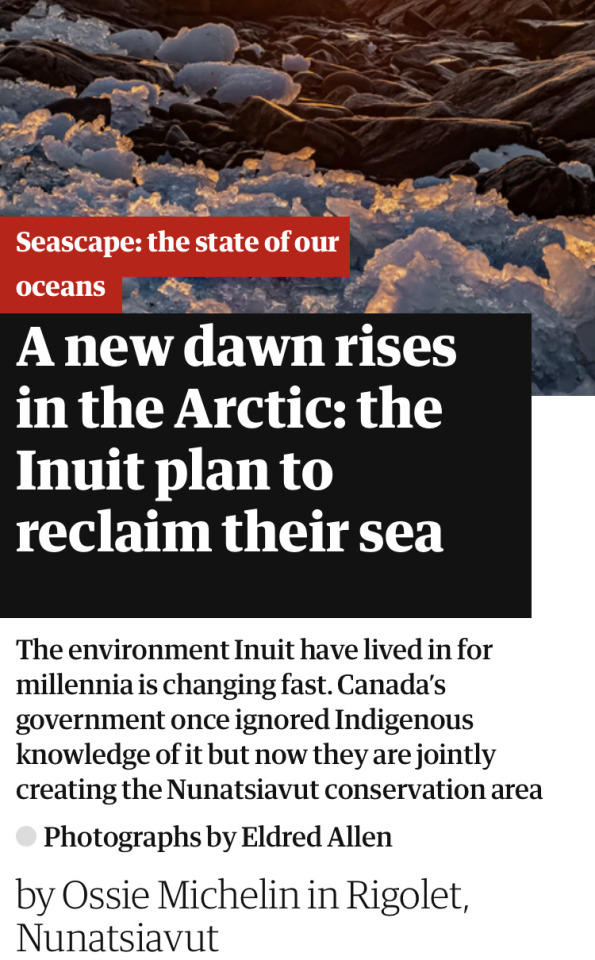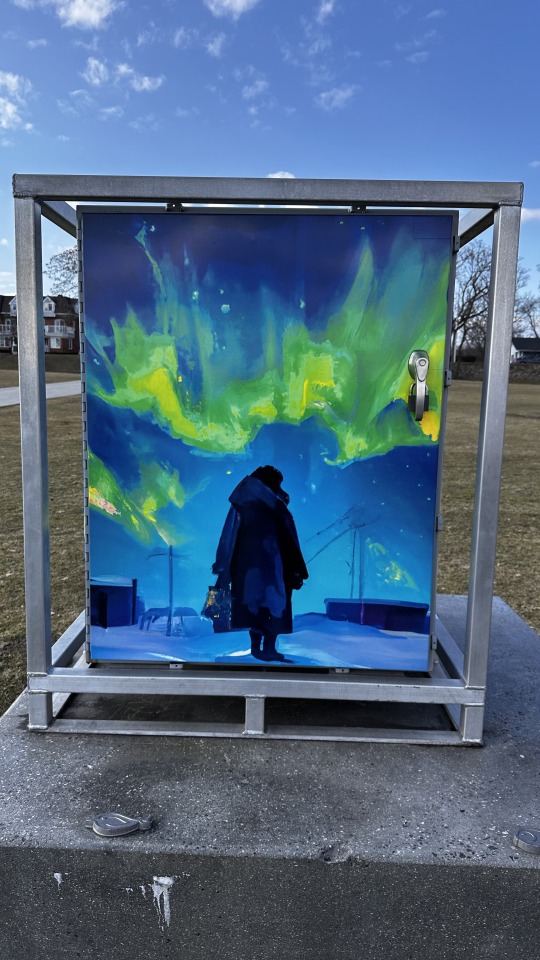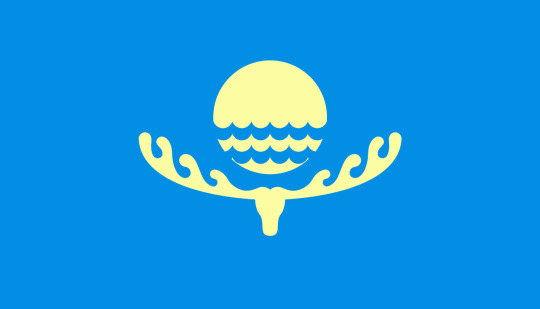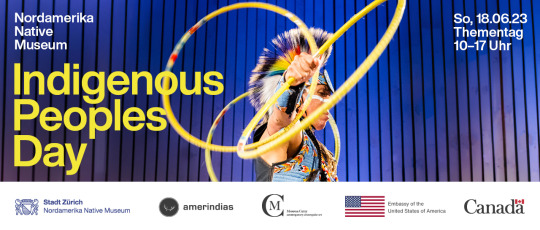#nunatsiavut
Explore tagged Tumblr posts
Text
News from Newfoundland and Labrador, 4 July.
A canine partner was used to track down a suspect after an incident in the east end of St John's.
2. John Byrne and Crystal Chislett have been charged in Harbour Grace with producing guns and weapons using a 3D printer. The police seized long guns, handguns, some of which were made with a 3D printer, ammunition, and a security uniform complete with body armor
3. Three people were displaced after their home flooded in Sally's Cove due to a partially blocked culvert. The Red Cross has arranged emergency lodging, meals, and transportation for the affected individuals
4. Federal grocery rebate payments will be hitting bank accounts tomorrow.
5. Pierre Poilievre is visiting Newfoundland and Labrador and discussing the burden of green taxes, which a conservative government would nix, he says.
6. Oil contaminants have been found in wild eggs in Labrador's north coast, leading to warnings and guidelines on consumption to minimize health risks.
The contamination is believed to be linked to a diesel spill in 2020, raising concerns about the long-term impact on traditional Inuit diets and livelihoods.
There is a need for increased communication, research, and mitigation efforts to address the contamination source and protect the food chain in northern communities.
#StJohns#policedog#suspecttracking#HarbourGrace#3Dprinting#weaponsseized#flood#displacement#SallysCove#RedCross#groceryrebate#PierrePoilievre#AxeTheTax#oilcontamination#Labrador#healthrisks#Nunatsiavut
0 notes
Text
Seeing a lot of posts about the Palestinian flag, and it got me thinking about indigenous flags around the world.
Māori:

Kalaallit Nunaat:

Haudenosaunee

Nunatsiavut:

Australian Aboriginal:

Torres Strait Islands:

Rapa Nui:

Kurdistan:

Sami:

Ainu:

Of course, these are just a handful. May they all reclaim their stolen lands.
#palestine#free palestine#indigenous people#ainu#sami#rapa nui#inuit#greenland#maori#australian aboriginal#kurds#kurdistan#colonialism#decolonization#land back
17K notes
·
View notes
Text
https://www.theguardian.com/environment/2023/aug/27/arctic-horizon-inuit-first-protected-zone-nunatsiavut-canada-photo-essay?ref=futurecrunch.com

#nature#science#environmentalism#environment#animals#climate change#conservation#indigenous#ndn#inuit#canada#arctic#good news
450 notes
·
View notes
Text
The recent discussion about the prospects of the US making advances on Greenland to buy it has brought me some food for thought for something i'm particularly interested in, but seems to bear little to no attention outside of the countries where this happens - and, to some extent, not even there. Seeing discussion "out there" - on most mainstream subreddits, by liberals, etc., has made me notice that most of the time, people treat Greenland as a form of "Antarctica of the North": it is merely a piece of land, and, as such, the only things there to discuss are its nature (including fauna, flora and other natural resources) and its strategic value. You see, the problem of the US wanting to buy Greenland isn't "but the polar bears!" or smth. You see, 56 thousand people - around 90% of these native Inuit (kalaallit) - live in Greenland. And this brought me over to think about the WHOLE arrangemente of things - what about all the other Inuit peoples? See, i'm going to use the term "Inuit" very loosely here. It's going to include everything from the Greenlandic Inuit to those in Nunavut, Nunatsiavut, Nunavik, NunatuKavut, Inuvialuit, the Iñupiaq, etc. Sometimes i'll also say the "Inuit-Yupik-Unangan" peoples to refer to a very wide array of groups with many varieties but who have been bunched together here in case it is useful to do so, but beware: they have many many differences across those hundreds and thousands of kilometres ranging the whole North American Arctic and beyond. So now that's warned, let me start.
You see, the Inuit-Yupik-Unangan peoples - an artificial grouping of the peoples who speak one of the Inuit-Yupik-Unangan (Eskaleut) languages - are those who inhabit this whole entire area of North America, and, to a smaller extent, Chukotka, in Russia. Beware this is a map of languages, not people! However, the extent of these peoples can be vaguely represented by this.

Okay, so. I'm not going to spend much time discussing the Inuit's past history as much as i'm going to explain modern, contemporary developments. So, quick rundown; - All of them seem to come from migrations coming from some form of vaguely unified culture in Northeast Siberia some 4000-6000 years ago. These groups did not migrate all at the same time. The first peoples to inhabit Greenland or Arctic Canada were not modern Inuit, for example - as they were part of the earlier Dorset culture; - All these groups, in diverse and different ways, lived in societies without usage of agriculture en masse, and, in some cases, at all; - Many depended almost entirely on hunting (including animals such as the caribou, but this a development much more common in the mainland than in Greenland, for example); - MOST (not all) of their native regions were never settled by European colonists in the same way as, for example, native lands in the modern contiguous USA were. Some places, such as Greenland and most of Alaska are exceptions, although the situation there, obviously, was not the same as in, for example, the USAmerican East Coast just because whites settled there. As such, the Inuit-Yupik-Unangan peoples were now the subject of influence and control by European colonists; the Yup'ik and Iñupiaq by Russians, the Inuit of Canada by the English (and, much less, the French) and the Greenlandic Inuit (kalaallit) by the Danish (ignoring here the Norse for simplicity sake). This in turn meant the beginning of Christian missions - such as that of Hans Egede in Greenland among the Kalaallit and Juvenaly in Alaska among the Yup'ik. It also meant the beginning of the slow adaptation of the traditional ways of life of each of these peoples into what was profitable and good for the European colonizers; this meaning the establishment, for example, of trading posts by the Hudson's Bay Company to exchange itens such as fur, among others. It is also necessary to not fall onto some kind of anticiv trap here and believe that this trades that the Europeans made with the Inuit were all just fooling them into getting to buy the Europeans' modern equipment and clothing while the "foolish" Inuit were having no say in the matter. Yes, many Inuit enjoyed trading! Because having better itens is good, and even the Inuit, who are frequently put as these "hard, tough natives resistant to such a hostile environment" need to make their own lives better. Does this mean the Europeans were good and just trying to help those "poor little indians"? Of course not. All while this happened, the frequent visit of whalers and fishermen led to the spread of many diseases among the Inuit - also including the Yupik and Unangan, who were contaminated in this case by the Russians. Leading into the 20th century, the situation of the Inuit-Yupik-Unangan is now in a "stalemate", as to say; they still mostly remain in nomadic or semi-nomadic state, but if they live within the range of some form of constant trade they've been subject to becoming less and less nomadic. Alaska has been bought by the USA, the colonies of Canada and Greenland are much more well established, yadda yadda. This is also the time where some Europeans, USAmericans and Canadians start to most have their almost orientalistic, false and misleading fascination for the Inuit - as it's the time stuff like Nanook of the North is made. But also at this time is when it all begins to get to how it is today. PT 1
15 notes
·
View notes
Text
The Newfoundland and Labrador government will offer an apology to residential school survivors and their families in Nunatsiavut and Happy Valley-Goose Bay next week. Premier Andrew Furey will make apologies from Nov. 1 to Nov. 3 in the five Inuit communities comprising the Nunatsiavut region along Labrador's north coast. He will also offer an apology next Friday in Happy Valley-Goose Bay, in central Labrador.
Continue Reading.
Tagging: @politicsofcanada
43 notes
·
View notes
Text

Bronson Jacque is an Inuit painter from Postville, Nunatsiavut, NL, recognized for his highly detailed portraits in oi
5 notes
·
View notes
Text


Flag Wars Bonus Round
6 notes
·
View notes
Text
Thanks for this information on Nunatsiavut. I need the resources for something I am working on (compare to Nunavut, Nunavik, etc.), so I am tweeting back the links in the image: https://t.co/CwR9VAa6O9 and https://t.co/zrjO9nU8aQ and https://t.co/eAGxXNceqO Thanks! https://t.co/tNZuMNHMYH — Paul Rombough (LEARN) (@paulrombo) Mar 27, 2024
—
0 notes
Text

New dawn for Arctic’s first people: the Inuit plan to reclaim their sea.
The environment Inuit have lived in for millennia is changing fast. Canada’s government once ignored Indigenous knowledge of it but now they are jointly creating the Nunatsiavut conservation area.
Martin Shiwak accelerates his boat to grab the seal he has shot before the animal sinks out of sight. Shiwak has hunted for years in the waters of Lake Melville, by the Inuit community of Rigolet in Nunatsiavut. “Sometimes you have to drive around here in the boat nearly all day to find a seal,” Shiwak says. “ And nowadays you can’t even afford to – $60 only gets you five gallons of gas.” Winter temperatures can average -30C (-22F) with the windchill. The Labrador current brings Arctic ice floes down along the coast, and a host of marine life. From November to June, shipping is impossible because sea ice covers the entire 9,320-mile (15,000km) coastline, so all food and supplies must be flown in. In Rigolet, a frozen 1.5kg (3.3lb) chicken will set you back $25 (£20). Hunting here is not just a tradition but a necessity. harsh environment for so long, the climatic conditions they rely on are changing.
Since 1950, Nunatsiavut has lost 40 days of ground snow a year. Its sea ice is vanishing faster than anywhere in the Canadian Arctic. In his lifetime, Shiwak has witnessed the winters becoming warmer, wetter, and shorter.
Courtesy; The Guardian
#inuit #community #indigenous #life #nunatsiavut #conservation #area
1 note
·
View note
Text
'Think Global Act Local' corruption of named political leaders, RCMP failings and on-going colonial cover-up regarding Muskrat Falls, Grand River, Mistashipu, Nunatsiavut Lower Churchill, colonial river industrial project of methane hydro, methyl-mercury dam reservoir, ecological-climate destruction and two colonial deaths 3 February 1940, Port Hope Simpson, NunatuKavut, Labrador, NL, Canada - A Case Study of British Colonialism 1934-1945 and beyond by Independent Research Llewelyn Pritchard MA 11 August 2023
#porthopesimpson#humanrights#canada#climatejustice#uk#corruption#civilresistance#stopecocide#rightsofnature#costoflivingclimatejustice#turnbacktheclock#labrador#muskrat falls#lower churchill#mistashipu#NunatuKavut
0 notes
Text
Newsletter Incomindios: Indigenous Peoples Day am North American Native Museum

13. Juni 2023 Liebe Freund*innen von Incomindios Auch wir feiern den Tag der Indigenen Völker und Kulturen am Sonntag, den 18. Juni. Gerne machen wir Sie auf das Detailprogramm zum Indigenous Peoples Day des NONAM aufmerksam.
Indigenous Peoples Day 2023 am Nordamerika Native Museum NONAM
Möchten Sie in coole Geschichten aus eiskalten Gefilden abtauchen, indigene Tänze und Musik kennenlernen, in Führungen und einer Podiumsdiskussion Expertenwissen von den Künstler*innen und Kurator*innen abholen oder am Holzschnitz-Workshop die Klinge führen? Es werden grossartige indigene Gäste aus Nunatsiavut, Sapmi, Hawai'i und Arizona mit dabei sein. Im Flyer im Anhang findet Ihr alle Angaben zum Programm. Anmelden ist nicht nötig. Feiert mit uns und NONAM den Indigenous Peoples Day am Sonntag 18.06.2023

Weitere Informationen finden Sie unter: Facebook und Stadt-Zuerich100 Jahre seit Chief Deskaheh's Ankunft in GenfDieses Jahr wird das 100-jährige Jubiläum von Deskaheh's Ankunft in Genf gefeiert. Im Jahr 1923 kam Deskaheh Levi General, Erbchief der Cayuga, nach Genf. Sein Ziel war es, im Namen der Six Nations am Völkerbund die Anerkennung als eigenständige Indigene Völker zu verlangen. Er scheiterte jedoch und wurde während seines einjährigen Aufenthaltes in der Schweiz nicht vom Völkerbund empfangen, konnte jedoch viele Menschen über seine Anliegen sensibilisieren und aufklären. Die Six Nations des Haudenosaunee Staatenbundes, auch als Irokesen bekannt, stammen aus Gebieten des heutigen Kanada sowie der Vereinigten Staaten.Zwischen dem 3. Juli und 16. August gedenkt eine Ausstellung am Quai Wilson in Genf der 100 Jahre seit der Ankunft von Deskaheh.Am Dienstag, den 18. Juli wird ein Marsch der Indigenen Völker sowie eine anschliessende Vernissage in Genf stattfinden. Weitere Informationen befinden sich im Flyer im Anhang. Ihr Incomindios TeamIncomindios | Kommunikation I Rose Nelson Wir sind nicht nur auf tatkräftigen Einsatz, sondern immer auch auf Spenden angewiesen. Wer uns also mit einem finanziellen Beitrag unterstützen möchte, darf das natürlich jederzeit gerne tun. Flyer NONAM Flyer Deskaheh Jetzt Spenden Anerkennung | Selbstbestimmung | Gerechtigkeit – Ihr Engagement zählt! Unterstützen Sie mit Ihrem Beitrag unsere kontinuierliche Arbeit für die indigenen Völker. Werden Sie Mitglied, engagieren Sie sich aktiv bei Incomindios oder spenden Sie für Projekte oder den Verein. Herzlichen Dank für Ihre Unterstützung! Read the full article
0 notes
Text
0 notes
